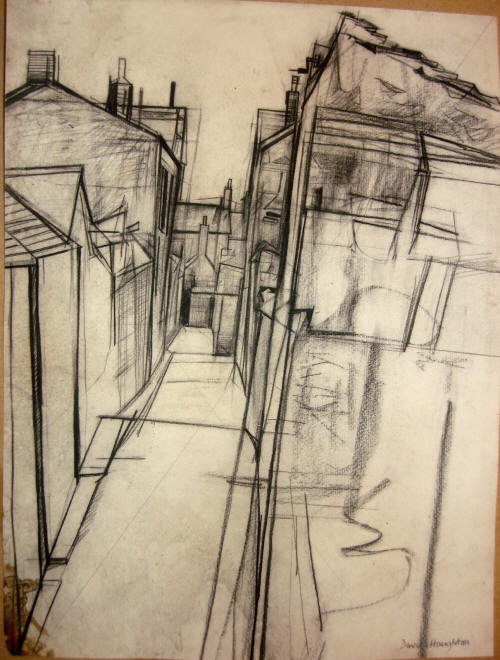|
|
| home | exhibitions | interviews | features | profiles | webprojects | archive |
|
David Haughton
David Haughton was one of the band of British artists who were attracted to West Cornwall in the years immediately after the Second World War. He came as a young man along with other contemporaries such as Terry Frost, John Wells, and Denis Mitchell and Wilhelmina Barns Graham to work alongside the more established Ben Nicholson and Barbara Hepworth. It was a heady environment and a good grounding, but while Haughton shared the obsessions of his peers he made his own way and the discovery which was to be the most formative of his career was of a place. Paradoxically, it was not the picturesque fishing town of St Ives but the gaunt mining town of St-Just-in-Penwith, some 10 miles to the south-west, perched between the moors and the Atlantic Ocean on the edge of the Land's End peninsula.
Even after Haughton left Cornwall in 1951 to
teach at the Central School of Arts and Crafts in London, it was St Just
which was to provide his inspiration and the fuel for his imagination.
In 1961 he recalled: The turning-point in my life occurred when I
discovered the town of St Just. What happened to me on that spring day
was inexplicable, but it was an experience that has, I believe, happened
to a good many people... I have no idea what caused it, whether it
really was the divine and transcendent visitation that it so clearly
seemed to be or merely a freak of one's chemistry. But I do know that it
was all-important and unutterably beautiful, a trance that went beyond
logic and never against it, and that I was at home and everything was
mine, loving and tender, the landscape and houses a living thing.
However, enough of David Haughton's work
survives in public collections (with the notable exception of the Tate
Gallery) and his inclusion in the 1985 St Ives Exhibition at the Tate
ensures that Haughton will be remembered as an artist, even though more
in the shadows than he deserves.
Haughton retired from teaching in 1984, and
during the last seven years suffered a series of multiple illnesses.
Living in reduced circumstances, he yet maintained yet both independence
and his obsessional drive to make art. Last summer, he had mustered the
will and strength to return to St Just to make some drawings and had the
offer of a London exhibition before him. It was typical of his
intensely-driven genius. |
|
|


